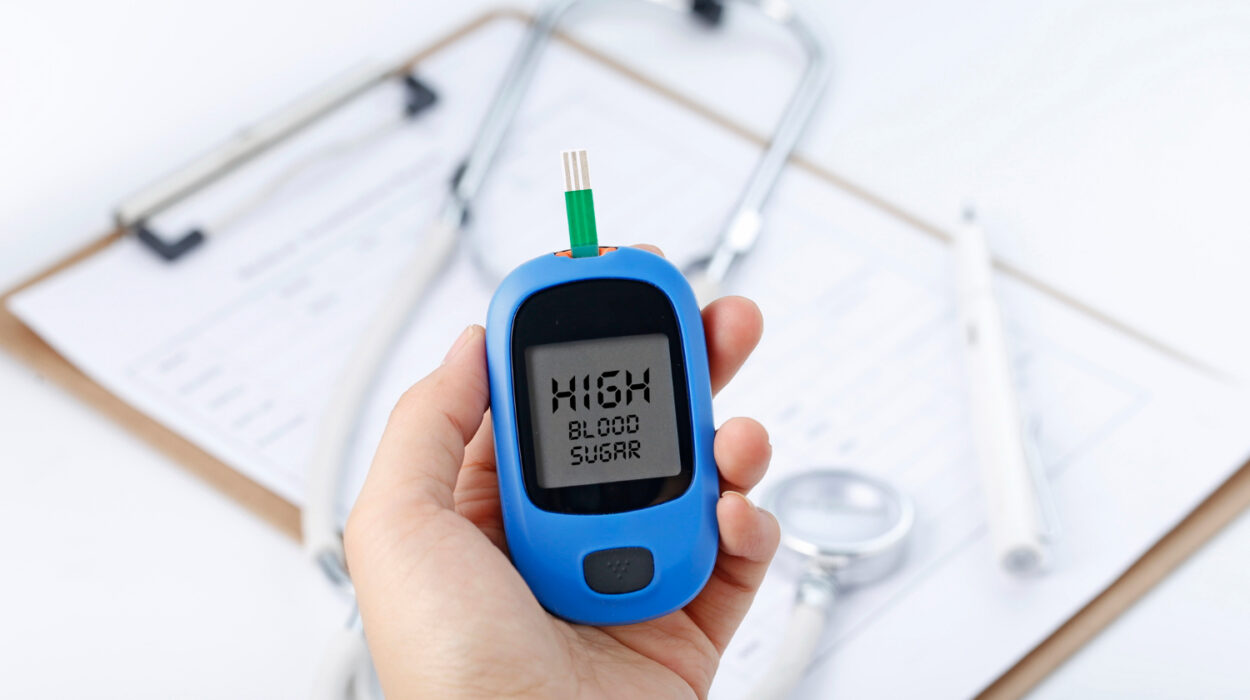Our blood sugar levels must be under control if we want to improve our health and wellbeing. It may be quite difficult to choose the best methods for controlling our sugar intake due to the abundance of information that is available online.
Taking on the challenge of controlling high sugar levels might be scary. However, there are a number of simple steps you may take to help your blood sugar levels return to a safe range. And doing so has advantages that go beyond only preventing diabetes.
Even in the absence of full-blown diabetes, those with prediabetes have an increased risk of future heart attacks, strokes, and other heart-related problems.
You may reduce your risk and consume less sugar by following the strategies listed below:
1. Know your numbers for blood sugar levels

Understanding your health situation clearly is crucial. The Centers for Disease Control and Prevention (CDC) estimates that more than 80% of people with prediabetes are ignorant of their condition.
Determining a healthy sugar level varies depending on the type of test. Take the fasting sugar test, for instance. In this case, a sugar level below 100 milligrams per deciliter is considered healthy.
Prediabetes is defined as blood sugar levels of 100 to 125 mg/dL, whereas diabetes is defined as blood sugar levels of 126 mg/dL or above. Hemoglobin A1C, a different test, calculates a person’s average blood sugar levels over a two- to three-month period and displays them as a percentage. Prediabetes is defined as a result between 5.7 and 6.4 percent; a result of 6.5 percent or higher denotes diabetes.
Many diabetics who rely on insulin to help them regulate their blood sugar use continuous glucose monitors, wearable devices that continuously record their sugar levels. Although some people without diabetes also use this technology to track their blood sugar levels, there is presently no information on how well this approach works for persons with prediabetes.
The best strategies to monitor your blood sugar levels while making lifestyle modifications should be discussed with your doctor if you have been diagnosed with diabetes or prediabetes.
2. Don’t make exercising difficult
Especially when it comes to incorporating regular physical exercise into your routine, making beneficial lifestyle changes doesn’t have to be difficult or hard.
To maintain a healthy lifestyle, it is recommended that you engage in 150 minutes of exercise per week. This can be as simple as a brisk walk, as our expert suggests, and does not necessarily have to be more intense than that.
Experts agree that choosing a regimen you are more likely to stick with is more important than choosing one that has onerous requirements that you are unlikely to complete. The appeal of it is that any physical activity may be included in this regimen, therefore a gym membership is not required.
According to experts, choosing a routine that you are more likely to stick with is more important than choosing one that is loaded with strict requirements that you are unlikely to complete. The appeal of it is that it doesn’t require a gym membership because it can be used to do any kind of physical exercise.
3. Get professional help
People with prediabetes can get help creating a strategy to lower their blood sugar levels to a healthy range from doctors and nutritionists who commonly work with people diagnosed with diabetes.
To find out if you qualify for the National Diabetes Prevention Program, which is supported by research, we advise discussing with your doctor.
4. Reduce your intake of any highly processed foods
Sugary foods like cookies and cakes should be consumed in moderation. But you should also exercise caution while consuming other items that sharply raise your blood sugar levels.
It’s crucial to pay attention to your consumption of processed carbohydrates when controlling your diabetes. It is undoubtedly true that many individuals think the answer is to stay away from sweets. The starchy carbs, on the other hand, are even more common.
White rice, pasta, bread, and other foodstuffs are included in this. The main culprits that might cause your blood sugar levels to dramatically increase are those.
5. Supplements for diabetes prevention
In an effort to reduce your blood sugar levels, you might be tempted to try out supplements like vitamin D, omega-3 fatty acids, and berberine. The concept that consuming supplements might help people with prediabetes avoid developing diabetes, despite a few encouraging research, is presently unsupported by hard data.
Have a discussion with your doctor first if you’re considering taking a supplement. It will be possible to guarantee that it won’t conflict with any additional prescriptions you could be taking, such as those for high blood pressure or cholesterol, by doing this.
You Can Also Read: Boost Your Skin’s Collagen with These 3 Lifestyle Habits
6. Glycemic index
You may have heard of the phrase “glycemic index” if you pay close attention to the meals that cause your blood sugar levels to soar. This useful tool enables us to estimate the rate at which different foods high in carbohydrates can raise our blood sugar levels. It’s comparable to a scale with pure sugar at the top that has a zero to 100 rating range.
The glycemic index was initially developed as a tool for study. However, it’s crucial to remember that while if it offers a practical method of classifying meals, not every person’s glucose levels are impacted by the same item in the same way. Sugar levels can also be impacted by elements including meal preparation and food pairings.
7. Follow the recommendations for a balanced diet.

Weight reduction can benefit from a well-balanced diet low in carbohydrates. Thus, sugar levels are quickly returned to a safe range and help prevent diabetes.
Try to follow a eating routine that resembles the Mediterranean diet, ensuring your plate is well-balanced:
Put vegetables on half of your plate
We advise heaping a variety of veggies on your plate. Dark leafy greens like spinach, which are high in nutrients, and pulses like chickpeas and lentils are always a good choice.
You should only have carbs on one-quarter of your plate
In order to maintain a balanced diet, carbohydrates are equally as important as proteins and lipids. The Western diet frequently encourages eating an excessive amount of carbohydrates, thus it’s crucial to avoid doing this.
Replace with healthy carbohydrates
Reduce your consumption of processed carbs while increasing the amount of nutrient-dense foods in your diet, such quinoa or farro.
Get your daily fiber recommendation
The American Diabetes Association suggests that individuals with diabetes and those at risk of developing it should consume a minimum of 14 grams of fiber per 1,000 calories, aligning with the Dietary Guidelines for Americans applicable to everyone. On the other hand, a daily fiber intake of 20 to 25 grams for women and 30 grams for males is advised, taking into account the most recent studies, for those over the age of 50.
Various foods are good sources of fiber
Excellent sources of fiber include legumes like lentils, nuts, and fruits, especially those with edible peel like apples and pears as well as edible seeds like berries.
8. Sleep on it

A healthy metabolism, which includes managing weight, depends on getting adequate sleep. This is true not only for managing diabetes but for all metabolic conditions. On the other hand, several studies have demonstrated that failing to receive the recommended amount of sleep—seven hours—each night might result in insulin resistance.
When that happens, the cells don’t respond to that hormone as they should. This means they can’t efficiently take in sugar from the bloodstream and convert it into energy, causing glucose levels to rise.
Stress may be difficult to handle when one is sleep deprived, which in turn raises the level of dangerous chemicals like cortisol, which is known to cause insulin resistance. Imagine being both worn out and overwhelmed at the same moment. These two elements go hand in hand. Your appetite increases as a result of your body’s increased insulin production, which causes you to eat more calories.
